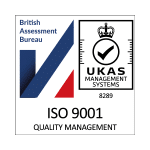AA : Anti-Aircraft Artillery – As part of the UK’s defence against air-attack, various types of guns were utilised to engage enemy aircraft ranging from heavy 3.7 and 4.5 inch guns to light mobile 40mm Bofors guns.
AM : Air Ministry – Formed in 1918, the Air Ministry was the department of the British Government tasked with managing the affairs of the Royal Air Force and its composite components. The remit of the AM extended from the construction and management of RAF airfields to the design and procurement of equipment, with ministry approval necessary for every item of RAF equipment from aircraft down to flying clothing.
AP : Anti-Personnel – A weapon primarily intended to injure or kill infantry and personnel not behind armour. An example from WWII is the German SD2 air-delivered ‘Butterfly’ bomb.
ARP : Air Raid Precautions – ARP refers to personnel and organisations during WWII dedicated to the protection of civilians from the danger of air raids. They were involved in everything from the enforcement of ‘blackout’, to manning of air-raid sirens and reporting and recording of bomb incidents.
BAC : Battle Area Clearance – The systematic and controlled clearance of unexploded ordnance from potentially hazardous areas of battle where generally the hazards are known not to conclude mines. It may be conducted using surface and subsurface clearance procedures.
DA : Delayed-Action Bomb – An aerially-delivered bomb fitted with a special fuze designed to detonate some time after impact – for example after 72 hours from the bomb penetrating the ground. Some of the primary aims were to delay reconstruction, kill/wound bomb disposal personnel, increase the period of evacuation, to reduce morale etc.
EO : Explosive Ordnance – Conventional munitions containing explosives. This includes bombs and warheads; guided and ballistic missiles; artillery, mortar, rocket, and small arms ammunition; all mines, torpedoes, and depth charges; demolition charges; pyrotechnics; clusters and dispensers; cartridge and propellant actuated devices, and all similar or related items or components explosive in nature.
EOC : Explosive Ordnance Clearance – Tasks or actions to reduce or eliminate the EO hazards from a defined area – for example through systematic searches, or survey using specialist equipment.
EOD : Explosive Ordnance Disposal – The detection, identification, evaluation, render safe, recovery and disposal of unexploded ordnance (UXO)
ERW : Explosive Remnants of War – Unexploded ordnance and abandoned explosive ordnance left behind after a conflict has ended. They include unexploded artillery shells, grenades, mortars, rockets, air-dropped bombs, and cluster munitions. Mines are often excluded from the definition.
HAA : Heavy Anti-Aircraft – Generally referred to in context of HAA gun/position – or HAA artillery projectiles. During WWII, these were large calibre anti-aircraft artillery (for example 3.7, 4.5 or 5.2 inch guns). Often static defensive positions with other related structures such as a command post, magazines, accommodation etc.
HE : A type of explosive designed to detonate (as opposed to deflagrating or ‘Low’ explosive). Characterised by extremely rapid decomposition and development of high pressure. During WWII, conventional explosive air-delivered bombs were referred to as ‘High Explosive’ bombs – and required a detonator, and in some cases a supplementary booster – to initiate them.
IB : Incendiary Bomb – A bomb which is designed to start fires. Often used in conjunction with high-explosive bombs. Common example deployed during WWII was the 1kg German incendiary bomb which contained a thermite filling.
IMAS : International Mine Action Standards – The standards in force for all United Nations mine action operations. They provide guidance, establish principles and, in some cases, define international requirements and specifications.
LAA : A type of light, mobile gun/weapon used for air-defence. Examples include the 40mm Bofors gun. Unexploded WWII-era light anti-aircraft projectiles are sometimes encountered during construction/excavation works across the UK.
LCC : London County Council – Used in the context of London County Council ‘Bomb Damage Mapping’ – a series of maps put together by the Architects Department used to denote bomb damage to buildings across central London during WWII utilising coloured shading.
LRR : Long Range Rocket (V-2) – A German WWII ballistic missile – a forerunner or modern space rockets and long-range missiles (in full Vergeltungswaffen-2 or “Vengeance Weapon 2”). More than 1,300 V-2s were fired at England during WWII.
LSA : Land Service Ammunition – A category of land-based weaponry which is commonly broken down into sub-categories of Grenades, Mortars, Projectiles, Mines and Rockets.
MoD : MoD: Ministry of Defence: Established in 1964, the Ministry of Defence is the British government department responcible for managing all matters of the British Armed Forces and the defence of the UK. Within this remit, the MoD manages the day-to-day operations of the armed forces, manages military land and estates, and is the headquarters of the combined armed forces of the UK.
NFF : National Filling Factory – The National Filling Factories were conceived by the Ministry of Munitions during WWI in June 1915. Their layout utilised elements of modern factory production with a logical flow of materials and a production line. By the end of the war, 18 factories had been built across the UK.
OB : Oil Bomb : An air-delivered incendiary bomb designed to result in fires. During WWII, the German ‘Oil Bomb’ was known as the flam or flammenbombe. It contained an oil mixture and a high explosive bursting charge. Often the impact fuze would fail to detonate, and they were withdrawn from widespread use at the beginning of 1941.
PAC : Pilotless Aircraft – The German V-1 ‘flying bomb’ (Vergeltungswaffen-1 or “Vengeance Weapon 1”). Often referred to as a ‘buzz bomb’ or ‘doodlebug’, this was a jet propelled missile of WWII – a forerunner of modern cruise missiles. Many thousands were launched from occupied Europe causing much damage and many deaths in the UK.
PM : Parachute Mine – During WWII, the German military adapted naval mines to be deployed over land targets. They were dropped from aircraft by parachute. Common variants included the LMA and LMB mines, weighing 500kg and 1000kg respectively, and measuring up to 2.6m in length.
POW : Prisoner of War – A non-combatant (military or civilian) who is held captive by a belligerent power during or immediately following an armed conflict. In the UK during WWII, hundreds of POW camps were set up across the country to house thousands of prisoners.
RAF : Royal Air Force – The UK’s aerial warfare force. Formed in 1918, it is the world’s oldest independent national air force. During WWII, hundreds of RAF airfields were constructed across the UK to house and maintain bomber and fighter aircraft engaged in the defence of the UK and the bombing of enemy targets.
RFC : Royal Flying Corps – The predecessor to the RAF in the United Kingdom. Formed in 1912, it originally supported the British Army by artillery co-operation and photographic reconnaissance. As the Corps grew, its role led to air defence, strafing of enemy infantry/emplacements, bombing of airfields, and later the strategic bombing of industrial and transport facilities. Over 170 airfields/sites had been built/requisitioned for RFC use across the UK by 1918.
RNAS : Royal Naval Air Service – The naval arm of the RFC became the RNAS in July 1914. During WWI, their primary roles were fleet reconnaissance, patrolling coasts for enemy ships and submarines, and attacking enemy coastal territory. Can also refer to a Royal Naval Air Station, an airfield operated by the RNAS, E.G. Royal Naval Air Station Yeovilton.
ROF : Royal Ordnance Factory – Royal Ordnance Factories was the collective name for the UK government’s munitions production facilities during and after WWII. Six generic types were set up across the UK – Engineering, Explosive, Filling, Medium Machine Shops, Rifles and Small Arms Ammunition. During WWII, new ROFs were to be built in areas regarded as relatively safe, and most were resultantly found in the west of the UK.
SAA : Small Arms Ammunition – Refers to the complete round/cartridge or its components including bullets, cartridge cases, primer/caps and propellants that are used in small arms. Most commonly it refers to bullets.
SD2 : Anti-Personnel “Butterfly Bomb” – A WWII-era German air-delivered anti-personnel/fragmentation weapon. They were dropped in containers that opened at a predetermined height, scattering the bombs over an area. The casing of these small bomblets sprang open with the appearance of butterfly ‘wings’.
SIP : Self-Igniting Phosphorous – Refers to a No. 76 Grenade – a British WWII-era incendiary grenade which comprised a glass bottle filled with phosphorus, benzene, and a rubber strip, designed to burn on breaking/impact. In the main issued to the Home Guard.
UP : Unrotated (or Unrotating) Projectile – An anti-aircraft rocket used by the British military for defence during WWII. Commonly set up in grids/arrays referred to as ‘Z-Batteries’.
USAAF : United States Army Air Force – By 1944, up to half a million American servicemen were based in the UK with the United States Army Air Forces (USAAF). Over 200 airfields were occupied or newly built by the USAAF, each housing around 2,500 men.
UX : Unexploded – A bomb or other explosive device that has failed to function as designed.
UXAA : Unexploded Anti-Aircraft – An anti-aircraft artillery projectile which has been fired and has failed to explode/function as designed.
UXB : Unexploded Bomb – An aerial delivered bomb which has failed to function as designed. Such devices can remain buried in the ground, and can still pose a risk of detonation – sometimes many years after they were discarded or deployed.
UXO : Unexploded Ordnance : Explosive ordnance that has been primed, fuzed, armed or otherwise prepared for use or used. It could have been fired, dropped, launched or projected, yet remains unexploded either through malfunction or design, or for any other cause.
V-1 : The German WWII V-1 ‘flying bomb’ (Vergeltungswaffen-1 or “Vengeance Weapon 1”). Often referred to as a ‘buzz bomb’ or ‘doodlebug’, this was a jet propelled missile of WWII – a forerunner of modern cruise missiles. Many thousands were launched from occupied Europe causing much damage and many deaths in the UK.
V-2 : German WWII V-2 Long Range Rocket (Vergeltungswaffen-2). German ballistic missile of WWII, the forerunner of modern space rockets and long-range missiles. Developed from 1936, it was first successfully launched in October 1942, and was fired against Paris on 6th September 1944. Two days later the first of more than 1,100 V-2s was fired against the UK.
WWI : The war (1914–18), fought mainly in Europe and the Middle East, in which the Allies (principally France, Russia, Britain, Italy after 1915, and the US after 1917) defeated the Central Powers (principally Germany, Austria-Hungary, and Turkey).
WWII : The war between the Axis and the Allies, beginning on 1st September 1939, with the German invasion of Poland and ending with the surrender of Germany on 8th May 1945, and of Japan on 14th August 1945.
Need help with UXO but not sure where to start?
Get in touch, our highly-trained staff have extensive experience in the sector – we’re here to help.
Call: +44 (0) 1992 245020 or Email: info@1stlinedefence.co.uk











